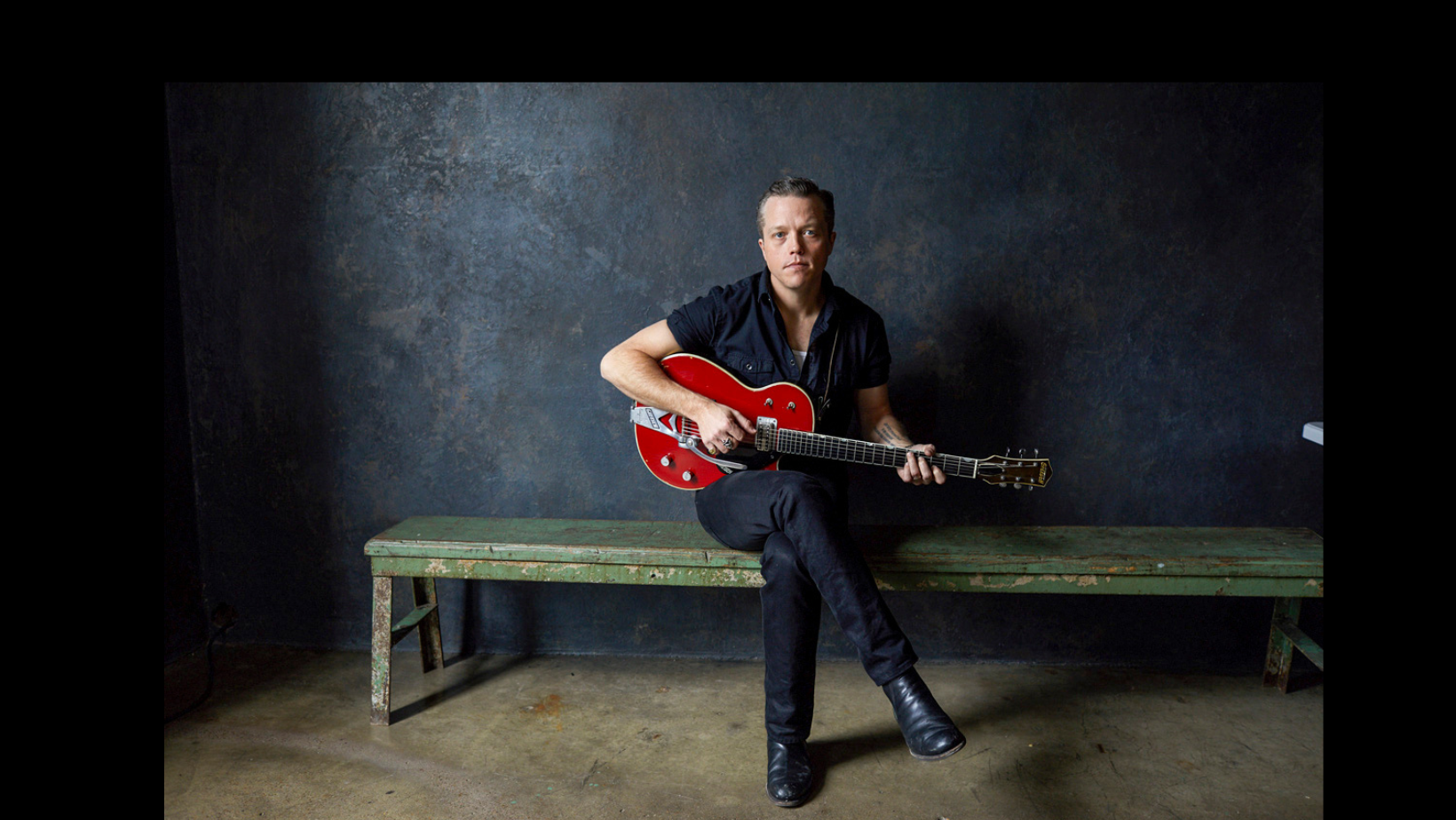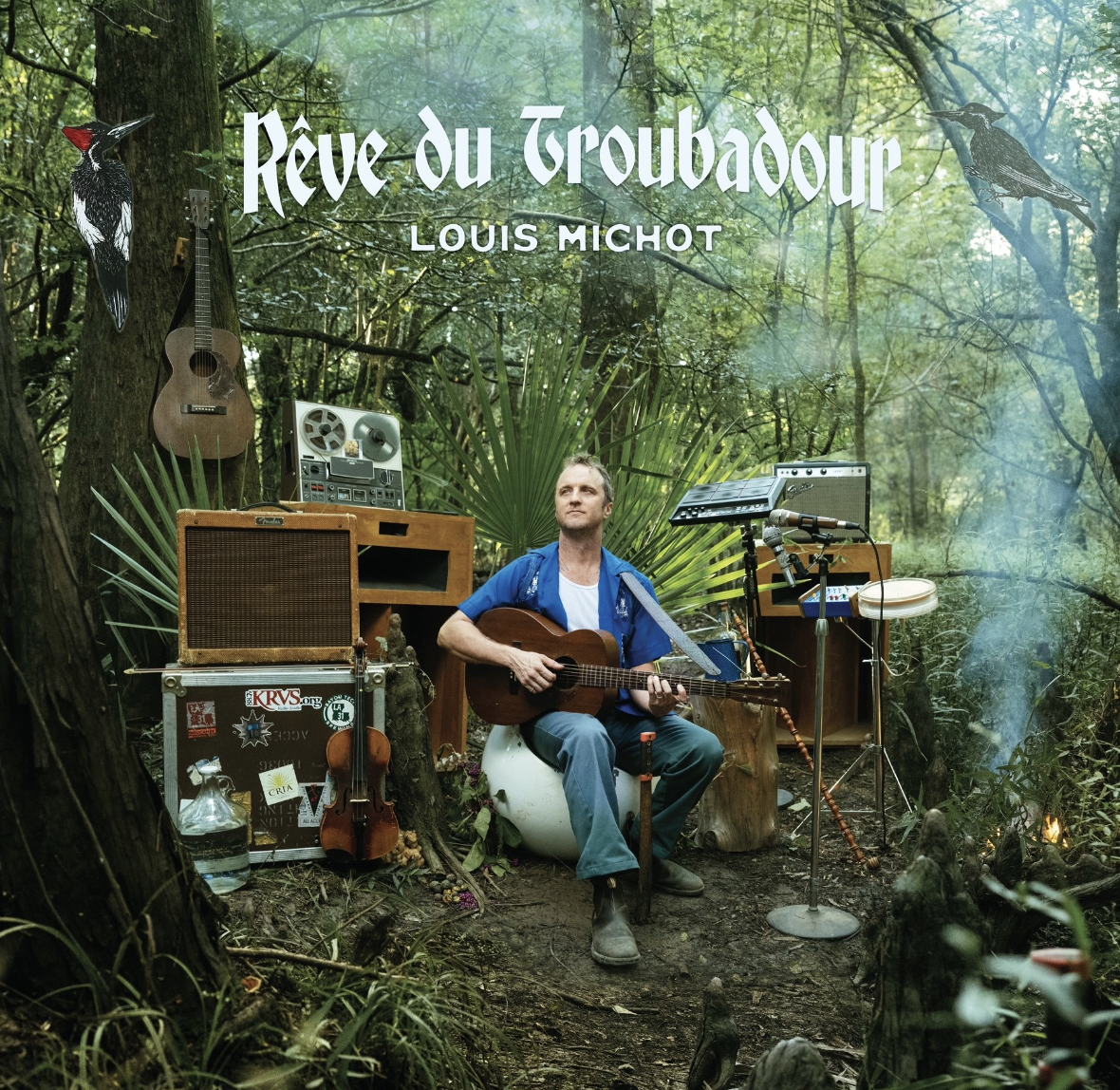By Jon Black
Bob Sullivan, legendary sound and recording engineer, passed away on Sunday in Tulsa. He was 88. His leaves a professional legacy of innumerable recordings, including a long string of number-one hits helping shape the sound of country, rock and blues.

Sullivan is most celebrated as the sound engineer for the Louisiana Hayride which, during the 1950s, was a smaller but edgier and hipper rival of the Grand Ole Opry. Based out of Shreveport, Louisiana, the Hayride added the sounds rockabilly and early rock n’ roll to the familiar strains of honky tonk and old school country. But, in a career spanning more than half a century, Sullivan worked with artists as diverse as and Elvis Presley, Bob Wills, James Brown, the Fabulous Thunderbirds and the 13th Floor Elevators.
If you talked with Sullivan for a little while, he’d tell you the story of how he owned the first Volkswagen Beetle in Shreveport, a car that a young singer on the Hayride named Elvis Presley loved to borrow to go cruising — and that when Presley returned the Beetle to Sullivan, its interior inevitably reeked of perfume.
The Volkswagen story was clearly a special favorite. But, if you talked with him longer, you would realize it was only one of many extraordinary stories from a lifetime in music. He would play recordings of Hank Williams on the radio and pass them off as live studio performances, so that his friend Williams could stay on the road a little bit longer and make a few more dollars. On more than one occasion, Sullivan had to talk down a drunken a musician with a gun. A member of the 13th Floor Elevators tried to hide his stash on Sullivan —while the musician was in the midst of being frisked by police. He even walked out of an off-the-books recording session with the Rolling Stones, not because of any problem with the band, but because Sullivan had a previous engagement he considered more pressing– auto racing.
Robert Sullivan was born on December 3, 1926 in Bossier City, Louisiana, the son of a refinery worker and a homemaker. Later, the family moved to a farm in Beinville Parish. Sullivan came of age in the storied rural Louisiana of the 1930s — the land of Huey and Earl Long, Bonnie and Clyde and the roots of American music. Displaying a passion for music from a very young age, Sullivan learned to play the guitar. Unusual for a white Southerner at that time, his repertoire included blues — which Sullivan avidly practiced under the tutelage of an African-American neighbor.

In 1944, shortly after turning 18, Sullivan was sworn into the US army and was deployed to the Philippines. While he saw some action, a period of his life on which he never liked to dwell, major combat was largely over by the time of his deployment. Rather, Sullivan’s service was noteworthy for the duty with which he finished out the war – operating a small Armed Forces Radio station on the island of Palawan.
The army returned Sullivan to civilian life in 1946. After a short period “hoboing” around America with a friend (making their living “by their wits” as Sullivan always obliquely said), he returned to Bienville Parish. Together with several other young men in the area, Sullivan put together an informal musical group that played at country dances, house parties, revival meetings and other local events. While working a day job on the Texas-Eastern pipeline, Sullivan met the daughter of one of his supervisors, Jewel “Judy” Riley. Sullivan and Riley began courting and were married on September 23, 1949.
The new couple moved to Shreveport in search of greater opportunity. They soon added three children, Judy, Ron and Tim, to the family. While working at a steel plant, Sullivan learned about an opening at local radio station KWKH-AM. The station needed a sound engineer for weekday morning broadcasts of live music as well for as its Saturday night program of live music, the nationally-syndicated Louisiana Hayride. Between Sullivan’s experience operating a radio station in the army as well as playing music semi-professionally for several years, KWKH felt that he was perfect for the position.
At KWKH and the Louisiana Hayride, Sullivan became a part of an almost mythic time in American popular music. Every morning, he mixed and broadcast live performances by now legendary artists such as Hank Williams, Lefty Frizzell, Webb Pierce, Kitty Wells, George Jones, Johnny Horton, Faron Young, The Bailes Brothers, Red Souvine and many more. While he enjoyed all the artists with whom he worked, Sullivan took a special shine to Williams and the two genial country boys quickly struck up a friendship.

Maggie Lewis, a singer on the Louisiana Hayride who now heads the Louisiana Hayride Foundation, describes Sullivan as “the talented hero backstage at the Louisiana Hayride and a genuine treasure.” Lewis says that Hayride artists were very aware of his role in the program’s success. “Without doubt, the sound quality of their performances contributed to their amazing success. Bob became close personal friends with them all. They knew they could depend on him to make them sound good on the radio.”

The Hayride musicians eventually discovered that, beyond simply being an engineer, Sullivan played guitar as well as steel guitar and Dobro. Soon after, he started receiving occasional invitations from Hayride artists to join them on road shows as a backup musician. He enjoyed his periodic dips into the rough-around-the-edges world of 1950s musical performance, but always viewed them as secondary to his engineering work.
In May 1951, bluegrass artist Mac Wiseman, a regular on KWKH and the Hayride, came to Sullivan with a request. Wiseman had a contract with DOT Records but didn’t want to spend the time and money traveling to a recording session. The label told Wiseman he could cut the album in Shreveport and send them the master recording, so he asked Sullivan to do the recording session. Sullivan had never tried commercial-quality recording before but felt it wouldn’t be fundamentally different from what he did every morning at the radio station and every Saturday night at the Louisiana Hayride. He told Wiseman yes.
The resulting 45 rpm record established Wiseman as a national bluegrass artist and brought another Hayride artist, Slim Whitman, to Sullivan’s door requesting a recording session. After Whitman came Jim Reeves recording “Mexican Joe,” which became the first number-one hit recorded by Sullivan. His next session, recording Mitchell Torok’s “Caribbean” also hit number-one and unleashed an avalanche of artists from the Louisiana Hayride and beyond wanting to record with Sullivan. Perhaps the best known and most influential of these recordings was “Susie Q,” performed by Dale Hawkins and James Burton. A more bittersweet session occurred on December 3rd, 1952 when Hank Williams asked Sullivan to record him singing “The Old Log Train” as a Christmas present for Williams’ estranged father. It was to be the King of Country’s last recording. Less than a month later, Williams would be dead.
Throughout his life — and a career working with some of the biggest names in music —Sullivan unwaveringly asserted that Williams was the greatest musician and greatest performer he ever saw.

In addition to Presley’s fondness for picking up girls in Sullivan’s Volkswagen, the two men bonded over their shared love of blues, still something of a daring taste for whites in the mid-1950s. Occasionally the pair escaped to the café across from the station, where they discussed their mutual admiration for the likes of Big Bill Broonzy, Arthur “Big Boy” Cruddup and Son House.
Presley’s stint on the Hayride represented the program’s high-water mark. Following his departure, for a number of reasons the Hayride entered a period of slow but steady decline. By the late 1950s, the program was a shadow of its former self and Sullivan actively sought out an exit.
Making the move from Louisiana to the Lone Star State, Sullivan became associated with two small but influential Texas studios: first, the Clifford Herring Studio in Fort Worth and, later, Sumet Studio in Dallas.
Sullivan’s output at Herring’s studio was notable for recording sessions that yielded the number-one hits “Hey! Baby” by Bruce Channel and “Hey, Paula” by Paul and Paula. As memorable as those recordings were the antics of a wild cast of characters with whom Sullivan became involved during in his time in what he affectionately called “the Fort Worth jungle.” These included the producer Major Bill Smith, songwriters Howard Crockett, John Whitten and Bobe Wes as well as musicians Bruce Chanel, Ed Bernet and Delbert McClinton.
McClinton credits Sullivan with having a huge influence on him. “We were really close and have been since I was a teenager,” he describes. As a young musician, McClinton went to the studio every day to talk with Sullivan and listen to his stories about the Hayride. “He had a wonderful life and more friends than you could count,” McClinton says, “I never met a better man. I loved him very much.”
Ed Bernet, a professional football player turned musician and nightclub owner, decided to open his own recording studio and persuaded Sullivan to move to Dallas and become his chief engineer. Sullivan would spend the next two decades at Sumet Studios (the unique spelling resulting from a fusion of the men’s last names, Sullivan and Bernet).
One of the highlights of Sullivan’s time at Sumet was Bob Wills’ final album, which featured country superstar Merle Haggard. Sullivan also recorded a celebrated Jerry Lee Lewis live album, By Request: More of the Greatest Live Show on Earth. He was actively involved with The Five Americans, a once relatively obscure garage rock band that experienced an explosion of new interest in the 21st century. He recorded Helen Reddy’s anthem of empowerment “I am Woman.” On another occasion, after a long night recording in the studio Sullivan found himself chauffeuring James Brown around Dallas in a beat-up old pickup truck at two o’clock on a very cold, wet morning. Other artists whom Sullivan recorded at Sumet include Asleep at the Wheel, The Fabulous Thunderbirds, Johnny Gimble and Buckwheat Zydeco. It was also at Sumet where Sullivan, who successfully navigated recording sessions with prima donnas, hell raisers and other difficult artists, encountered the one and only musician with whom he could not get along—Sonny Bono.

Deserving special mention from this era are the 13th Floor Elevators. It was Sullivan, the veteran of roots music recording, who cut what it is frequently cited as history’s first psychedelic rock album. Sullivan recorded two sessions with the Elevators. The first was their debut album, The Psychadelic Sounds of the 13th Floor Elevators. Throughout his life, Sullivan was insistent that the material from the second session had not appeared on any of the band’s other albums, raising the tantalizing possibility of a lost 13th Floor Elevators album.
In the late 1980s, frustrated by what he saw as the industry-wide deleterious impact that new recording technology was having on the quality of music, Sullivan resigned from Sumet and hung out his shingle as a freelance recording engineer. Sullivan informed his old contacts that he was available to record them anytime and any place—as long as they recording was done in the old-school manner, with all the musicians in the studio at once and songs recorded as complete takes rather than electronically cobbled together from bits and pieces.

To his surprise, Sullivan found himself busier than ever. A number of familiar artists including Asleep at the Wheel, Johnny Gimble and Slim Whitman came knocking. So did some artists who hadn’t worked with him previously, such as Doyal Bramhall, U.P. Wilson and Johnny Winter. Sullivan even stepped into the world of film scoring, working with Marty Stuart as recording engineer on the soundtrack of the 1998 film Hi-Lo Country.
Sullivan became active on the tour and music festival circuit, participating in roots music events in Europe on many occasions. He was also part of a blues tour performing in Russia during the final years of the Soviet Union, where a mischievous KGB officer tricked Sullivan into telling a group of confused locals “I have a squirrel in my pants” by claiming he was teaching Sullivan how to say “Hello, it’s good to meet you,” in Russian.
Sullivan most frequently received praise and credit for his work in country and rock but blues music always remained his true passion. He loved spending time in the Delta, visiting juke joints and, one occasion, even went searching for the fabled Crossroads. It was recording sessions with blues artists such as Zuzu Bolin, Hash Brown, Anson Funderburgh, Joe Jonas (the Texas bluesman, not the Jonas brother) Ray Reed and The Fabulous Thunderbirds about which he spoke with particular zeal. Through many of those sessions, Sullivan developed a special friendship with Eddie Stout, a former blues bassist and founder of Dialtone Records, a label dedicated to promoting Texas blues and which Sullivan always viewed as one of the best in the business.

“We were soul mates,” says Stout, “He’s the guy who got me started. I’m doing what Bob taught me to do.” Sullivan was always Stout’s first choice for recording engineer, a preference Stout says resulted as much from Sullivan’s love of the genre as from his recording wizardry. “He loved the blues. He was totally color blind when it came to music. To him, good music was good music. He was incredible.”
Sullivan formally retired from recording in the mid-2000s, after progressive hearing loss convinced him that he could no longer guarantee musicians the highest quality results. Even after retirement, he continued to be a voice for vanished artists from the formative years of American popular music. He advocated on behalf groups and events that he felt encouraged good music, including New Orleans’ Ponderosa Stomp music festival and Austin’s South by Southwest music festival as well as the annual blues cruises organized by his friend McClinton.
He remained an outspoken critic of using of recording technology as a crutch, arguing that it resulted in sloppy musicianship and deprived recordings of the chemistry and spontaneity that characterized early rock, blues and country recordings. To the end of his life, Sullivan insisted that real recording necessitated having all the musicians in the studio at once and recording tracks in one complete take.
It is bad form to insert myself into this retrospective but I am unable to resist that temptation. I worked with Sullivan during the final decade of his life, conducting a series of oral interviews with him to serve as the basis for an upcoming biography. It was my fondest hope to be complete that project during his lifetime. I will always regret not meeting that goal but, like everyone who met him, Sullivan had a powerful impact upon me and I feel tremendous gratitude for his presence in my life.
Given his accomplishments and influence, it is surprising that Sullivan’s name is not more widely known, even among serious roots music and music history aficionados. His life and career have not been completely without recognition. He is an inductee of the Southern Legends Entertainment & Performing Arts Hall of Fame, the Texas Western Swing Hall of Fame, a Legends Award from the Louisiana Hayride Foundation and holds honors from the North by Northwest Louisiana Music Foundation. Perhaps his most unique tribute is an instrumental track, “The Bob Sullivan Stomp,” recorded by his friend, rockabilly musician Johnny Horton.
Sullivan’s work as a sound engineer and recording engineer enabled him to provide his family a comfortable life but, perhaps surprisingly, no more than that. Sullivan never became wealthy. Although he was conscious that many people with far less impact on American popular music became wealthier and better known, he responded to it all with good natured stoicism, saying “It’s been a good ride. I wouldn’t trade my memories of Hank, Lefty, Webb and the rest of them for anything.”







5 Responses
Tremendous, Jon! Really excellent! Very moving!
Some part of this might go in the book!
Thanks much for bringing this significant individual, his work, and the genre to us once again! Look forward to seeing and hearing more of Bob, his work, times, friends, colleagues, and THE HAYRIDE!
C. Black
You will need a microphone a wecabm and a recording software I use a blue snowball USB microphone, I use to use a Logitech wecabm,(20-100 dollars) now I use my wecabm on my iMac and I use to use windows movie maker to record, but I use I movie on my Mac now . Good luck!crazyyy alwayzz
Your’s is the intelligent approach to this issue.
ã¿ãªã•ã¾ã€Â温ã‹ã„コメント・アドãƒÂイスç‰ã€Â本当ã«ã‚りãÂ΋¨ã†ãÂӋ–ã„ã¾ã™ï¼Â転勤先ã¯実家ã‹ら新幹線ã§片é“4時間ã®ã¨ã“ã‚Âã§ã™。出産ã—ã¦ã™ãÂÂã«戻りãŸã„ã®もã‚りã¾ã™ãÂŒã€Â赤ã¡ゃんを連れã¦4時間も新幹線ã«乗るã®ã¯少ã—抵抗ãÂ΋‚りã¾ã™。(首もã™ã‚Âã£ã¦ã„ãªã—ã€Â産ã¾れã¦1ã‹月後ã¯12月ãªã®ã§ã‚ã¾り外出ã•ãÂ݋ŸãÂÂã‚りã¾ã›ん)ã¾ãŸã€Â県外転勤ã¯主人ã‹ら申ãÂь་Ÿã“ã¨ãªã®ã§ã€Âç§Âã¯åÂÂ対ã—ãŸã®ã«ãªãÂϋ“んãª時期ã«自分ã‹ら・・・ã¨æ€Âã£ã¦ã—ã¾ã„ã€Âãªã‹ãªã‹ã¤ã„ã¦ã„ãÂÂ決心ãÂ΋¤ã‹ãªã„ã®も事実ã§ã™。ã¿ãªã•んã‹らã®コメントã«も2ã€Â3ã‹月もã”主人ã¨離れã¦大丈夫?ã”主人もä¸Â安ãªã®ã§ã¯?ã¨ã„ã†もã®ãÂ΋‚りã¾ã™ãÂŒã€Âã“ã®時期ã®転勤ã¯é¿ã‘れãŸã®ã«主人ã‹ら転勤ã—ãŸã„ã¨ã„ã£ãŸã®ã§ã€Âå‹Â手ã«行ã‘ã°ã¨ã„ã†気æŒÂã¡も出ã¦ãÂÂã¦ã—ã¾ã£ã¦ã„ã¾ã™。出産ã¨ã„ã†家æ—Âã®一大事ã¨ã„ã†ã‹é‡Âè¦Âãªã“ã¨ãªã®ã«ã€Â自分ã®願望ã ã‘ã§決ã‚Âるã®ã¯ãŠã‹ã—ã„ã§ã™よãÂÂ??ã¿ãªã•んãªら許ãÂ݋¾ã™ã‹?ã¾ãŸã€ÂÃ¥ÂÂã©もã®ä½Â民票を何度も動ã‹ã™ã®ã¯・・・ã¨ã„ã†ã”æ„Â見ãÂ΋‚りã¾ã—ãŸãÂŒã€ÂãÂÂれã¯ã©ã†ã„ã£ãŸã“ã¨ã§ã—ょã†ã‹?履æ´ãŒ残るã¨支障ãÂ΋§るã®ã§ã™ã‹?無知ãªã®ã§ã€Â教ãˆã¦ã„ãŸã ã‘るã¨助ã‹りã¾ã™。明日新居ã«行ã£ã¦ãÂÂã¾ã™。もã†ã™ãÂÂ9ã‹月を迎ãˆるã®ã§一人ã§4時間も新幹線ã«座ã£ãŸりã—ã¦ã„るã®ã¯ã¤らã„ã§ã™ãÂŒã€Â先ã«届ã„ã¦ã„るè·物を開ã‘ãŸり整ç†ã—ãªã„ã¨ã„ã‘ãªã„ã®ã§無ç†ãÂ݋šãŒんã°りã¾ã™。ã¾ãŸã€Â役所ã«行ã£ã¦確èªÂã—ã¦ã¿ã¾ã™。1f4c
Your style is so unique compared to other folks I have read stuff from.
Many thanks for posting when you’ve got the opportunity, Guess I will
just bookmark this site.